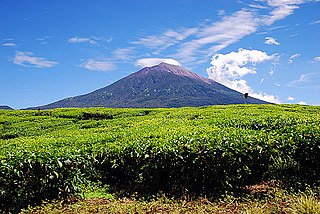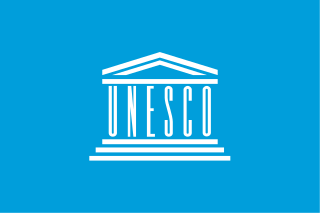
Zepita is a town in the Chucuito Province south of Lake Titicaca in the Puno Region of Peru. [1] It has a population of 19,884.[ citation needed ]

Zepita is a town in the Chucuito Province south of Lake Titicaca in the Puno Region of Peru. [1] It has a population of 19,884.[ citation needed ]

A World Heritage Site is a landmark or area with legal protection by an international convention administered by the UNESCO. World Heritage Sites are designated by UNESCO for having cultural, historical, scientific or other forms of significance. The sites are judged to contain "cultural and natural heritage around the world considered to be of outstanding value to humanity".
Red Bay is a fishing village in Labrador, notable as one of the most precious underwater archaeological sites in the Americas. Between 1530 and the early 17th century, it was a major Basque whaling area. Several whaling ships, both large galleons and small chalupas, sank there, and their discovery led to the designation of Red Bay in 2013 as a UNESCO World Heritage Site.

The Bujang Valley is a sprawling historical complex and has an area of approximately 224 square kilometres (86 sq mi) situated near Merbok, Kedah, between Gunung Jerai in the north and Muda River in the south. It is the richest archaeological area in Malaysia.

Cultural landscape is a term used in the fields of geography, ecology, and heritage studies, to describe a symbiosis of human activity and environment. As defined by the World Heritage Committee, it is the "cultural properties [that] represent the combined works of nature and of man" and falls into three main categories:

Kerinci Seblat National Park is the largest national park on the island of Sumatra, Indonesia. It has a total area of 13,791 km2 and spans four provinces: West Sumatra, Jambi, Bengkulu, and South Sumatra.

The Eastern Settlement was the first and by far the larger of the two main areas of Norse Greenland, settled c. AD 985 – c. AD 1000 by Norsemen from Iceland. At its peak, it contained approximately 4,000 inhabitants. The last written record from the Eastern Settlement is of a wedding in Hvalsey in 1408, placing it about 50–100 years later than the end of the more northerly Western Settlement.

Jingci Temple is located at the foot of Huiri Peak of Nanping Hill. It is the second prominent Buddhist temple beside West Lake in Hangzhou, China. Together with Lingyin Temple, it is called the jewel of the southern and northern hills. The temple was claimed as a key national Buddhist temple in Han areas by the State Council in 1983.

The United Nations Educational, Scientific and Cultural Organization (UNESCO) is a specialized agency of the United Nations (UN) with the aim of promoting world peace and security through international cooperation in education, arts, sciences and culture. It has 194 member states and 12 associate members, as well as partners in the non-governmental, intergovernmental and private sector. Headquartered in Paris, France, UNESCO has 53 regional field offices and 199 national commissions.
The Lal-lo and Gattaran Shell Middens are one of the most significant archaeological gastronomic finds in Southeast Asia in the 20th century. The site is located along the banks of the Cagayan River in the province of Cagayan, Philippines. The site, as old as 2000 BC, is highly important due to its archaeological impact on the food resources and human activities of the ancient peoples of the Cagayan Valley. It is currently under consideration as a UNESCO World Heritage Site.

Medieval Town of Toruń is the oldest historic district of the city of Toruń. It is one of Poland's World Heritage Sites. According to UNESCO, its value lies in its being "a small historic trading city that preserves to a remarkable extent its original street pattern and outstanding early buildings, and which provides an exceptionally complete picture of the medieval way of life". The Medieval Town has an area of 60 ha and a buffer zone of 300 ha. It is composed of the Toruń Old Town, Toruń New Town, and the Toruń Castle.